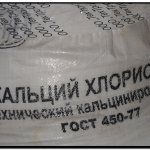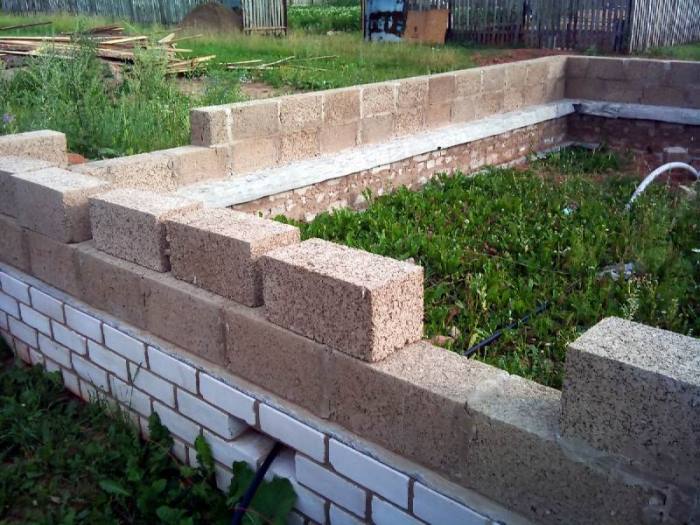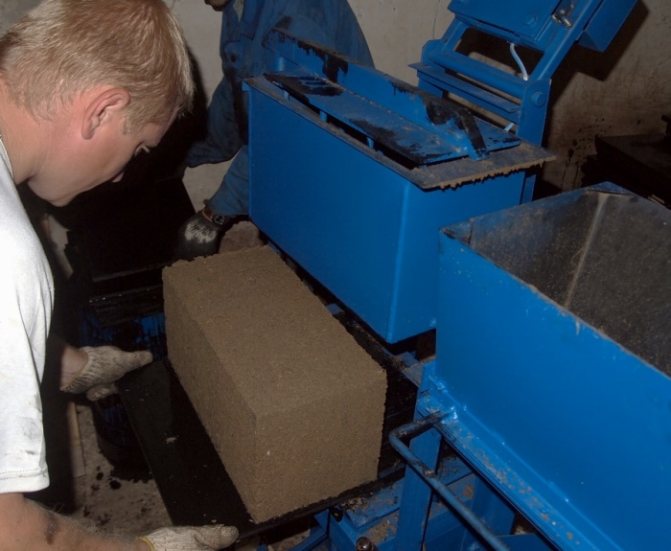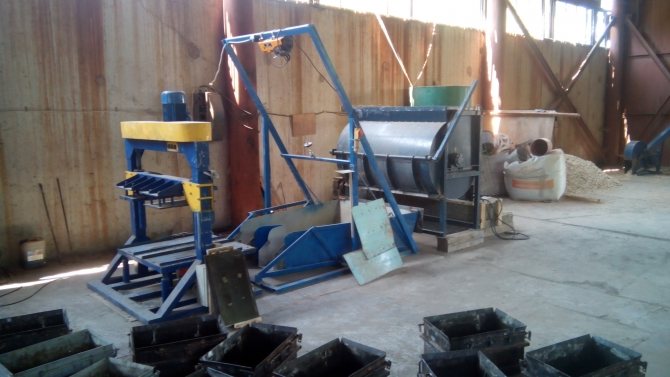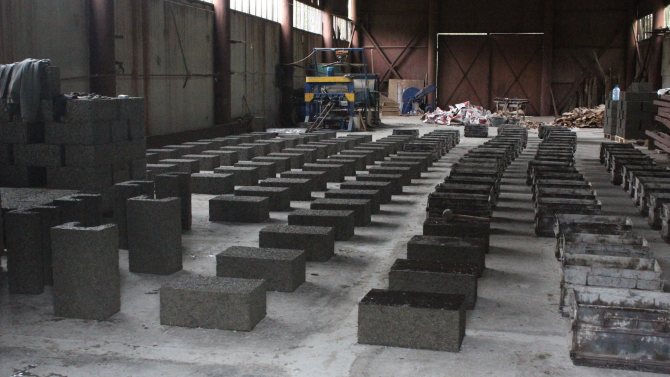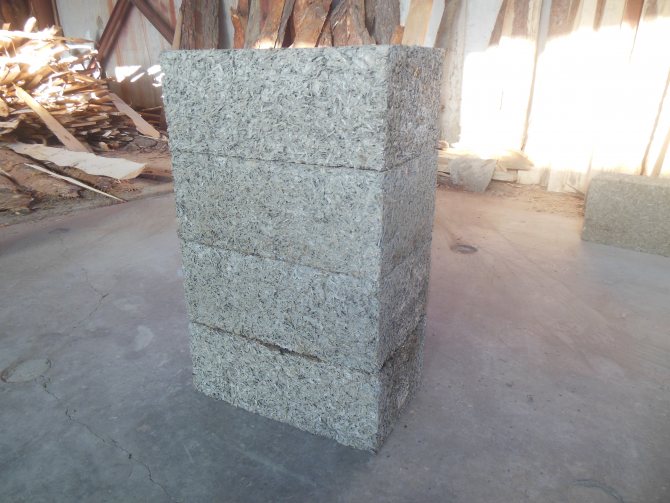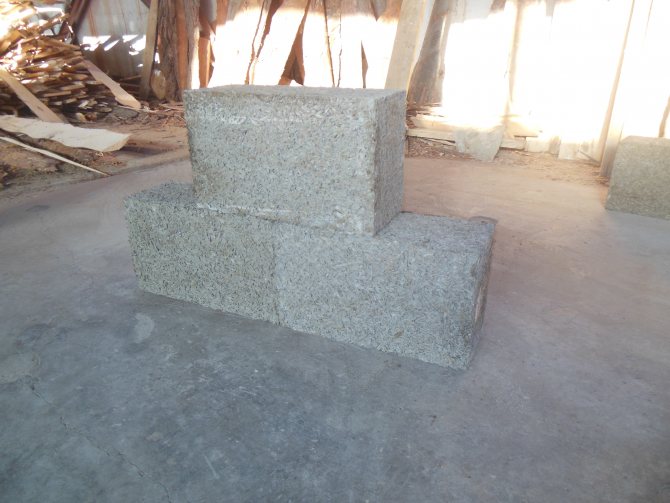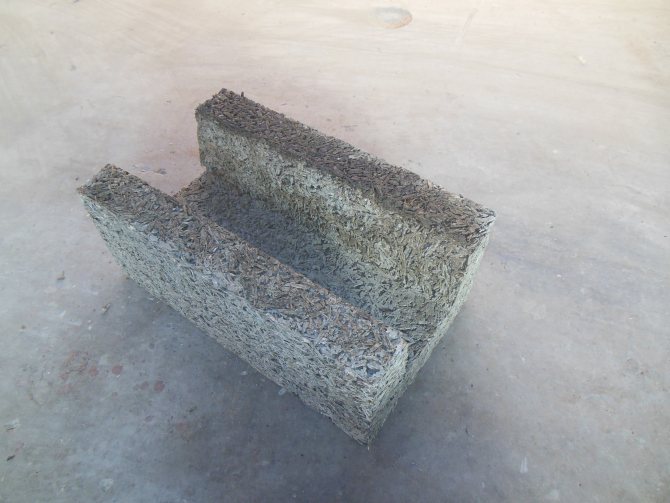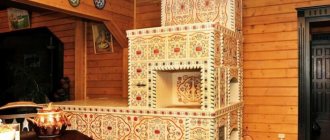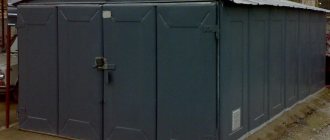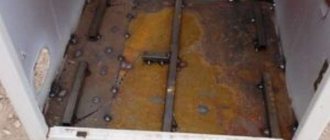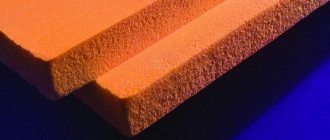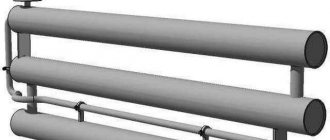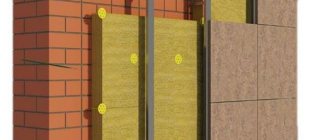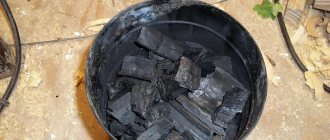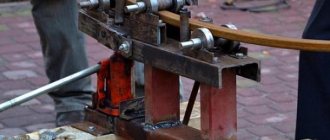Nomenclature of monolithic wood concrete
The nomenclature of monolithic wood concrete is the same as that of block wood concrete - there are 2 types:
- Constructional. Has a density of 500 to 850 kg / cu. m. Corresponds to the strength class B1, B1.5, B2, B2.5. They are used for the construction of load-bearing walls and partitions of buildings up to 2 floors.
- Heat insulating. Its density is from 300 to 500 kg / cubic meter. m. Strength class - B0.35, B0.5, B0.75. They are used for filling sinuses and inter-wall voids for thermal insulation and sound insulation.
The strength of the poured wood concrete depends on the grade of cement used and the quality of the compaction of the mixture. With insufficient strength, reinforcement of wood concrete is performed.
Wood concrete production at home
a href = https: //www.arbolit.net/assets/files/2014/02/1387212921_arbolit.jpgimg class = alignleft wp-image-24541 title = Block of wood concrete alt = Block of wood concrete at home src = https: // www .arbolit.net / assets / files / 2014/02 / 1387212921_arbolit-300 × 207.jpg width = 300 height = 207 // a
Since the days of the Soviet Union, Arbolit has been considered an excellent building material that is suitable for the construction of walls in any premises. This material belongs to lightweight concrete, and in the common people it is also called sawdust concrete.
The production of wood concrete at home is not such a high-tech process, so it is quite possible to cope with this task without special devices. h4 Technology of wood concrete production / h4 Based on the popular name, it is easy to guess that the composition of the material, as well as in the composition of any concrete, includes cement - grade 400 or 500. To increase the strength indicators, other cement can also be used.
Also from the name it is clear that the composition includes sawdust. But, not only sawdust can be added to wood concrete - it can also be small wood chips and shavings. If any filler is not enough, then it is replaced with the remnants of needles, bark or foliage, but there can be no more than 5% of such additives in the mixture by weight of the filler that needs to be replaced.
The dimensions of organic materials in the composition of wood concrete should not exceed the permissible standards - and this is no more than 5 mm in width and no more than 25 mm in length. Therefore, wood waste is first passed through a crusher, and then mixed with cement and chemical additives.
In the conditions of factory production of wood concrete, the addition of chemicals is mandatory, since these substances are able to neutralize sugar, which is contained in large quantities in organic matter, and since it negatively affects the strength of the finished substance, its neutralization is mandatory.
The most common chemical reagent is calcium chloride and aluminum sulphate. If we are talking about the production of wood concrete at home, then chemicals may simply not be at hand, so many home craftsmen do without them.
But it is imperative to remove sugar, because the finished material will swell, due to the fact that organic matter will inevitably begin to rot. To prevent this destructive process, it is necessary to withstand all wood waste in the open air for at least a quarter of a year, which means that the sawdust, wood chips and shavings should be allowed to dry for 3-4 months in the fresh air.
Note: You can buy the best partitions for bathrooms at low prices in the company www.oki-doki.ru. Recommended! h4Production of wood concrete at home / h4 The production of wood concrete begins with the processing of woodworking waste. To begin with, crushed organic matter is poured with water and mixed well. Experts also advise to keep the wood pulp in a lime mortar for at least 3 hours.a href = https: //www.arbolit.net/assets/files/2014/02/shepa.jpgimg class = alignright wp-image-24542 title = Sawdust alt = wood shavings src = https: //www.arbolit.net /assets/files/2014/02/shepa.jpg width = 289 height = 193 // a
Further, the wood soaked in a lime solution is mixed with cement. The proportions should be something like this: water, sawdust and cement in a ratio of 4: 3: 3.
It is best to mix the solution in a concrete mixer, because lumps are completely unacceptable, and such a consistency can only be achieved using this tool.
The mass at the exit should have a slightly crumbly structure, but at the same time, if you squeeze a little solution in a fist, it should take the form of a dense lump.
If you are convinced that the solution keeps its shape well, then it can be safely used further for its intended purpose. As you can see, you will hardly need a mini-machine for the production of wood concrete, but do not forget to arm yourself with a concrete mixer.
In general, arbolite, even in the west, is recognized as an economically profitable material, so it is in demand there, but this material has yet to conquer our market.
Thanks to such little fame, the business of making wood concrete is very profitable today, especially since the materials for its manufacture are the cheapest, but the advantages of the finished material are quite significant and the following cannot be underestimated: ul li- The material is suitable for the manufacture of such structures like lintels, blocks and slabs. And also the material can be used for monolithic filling of load-bearing walls. / li li- After hardening, the wood concrete easily lends itself to mechanical stress, so you can safely saw it, drill holes in it, hammer nails into it and even screw in screws and dowels. / li li- Wood concrete production is famous for its simplicity of technology and cheapness of "ingredients". / li li- Hardened blocks perfectly accept any type of finish, so you can give free rein to your imagination and feel free to test the strength of wood concrete with all kinds of plasters or facing bricks. You can even sheathe it with plasterboard without making a special profiled frame, because the material can be attached directly to the walls. / li li- The thermal insulation properties of wood concrete are at the highest level, so houses made of it do not need such heating costs as, for example, brick houses. / li li- The material is not fire hazardous, even though there is so much wood in its composition - after all, it is processed with lime and other chemicals, and cannot burn. / li li- Fungus, mold, rotting - all this is not scary to arbolit. / li li- Excellent frost resistance makes the building material popular even in the harsh northern regions. / li li- In addition to all of the above, high soundproofing parameters of sawdust concrete. / li / ul Most often, the wood concrete mixture is formed into blocks, which are not only light in weight, but also easy to transport, well, and the variety of buildings and structures that can be built from it is simply limitless. p style = text-align: center; a href = https: //www.arbolit.net/assets/files/2014/02/arbolit_stanok_jpg_1306931664.jpgimg class = aligncenter size-full wp-image-24543 title = Arbolit Machine alt = wood concrete machine src = https: //www.arbolit.net/assets/files/2014/02/arbolit_stanok_jpg_1306931664.jpg width = 600 height = 450 // a / p
h4 Mold for making wood concrete blocks / h4 Molds for making blocks can be made independently from old wooden boxes with removable bottom. Experienced craftsmen advise inside to whip such a box with ordinary linoleum to facilitate the procedure for removing the finished block. It is worth leaving a little space on top - about 20 mm, in order to be able to additionally fill the block with a plaster solution.
So, wood concrete is an environmentally friendly material, so it is so important to focus on this quality when building a house that will not have a negative impact on human health. h3 Video tutorial: / h3 iframe src = // www.youtube.com/embed/TYPMVVbfpV8?feature=player_detailpage height = 360 width = 640 allowfullscreen = frameborder = 0 / iframe
Cooking monolithic wood concrete: composition and proportions of the mixture
Monolithic wood concrete 80-90% consists of wood chips, as a filler, cement, water and chemical additives that accelerate the hardening of the solution and to eliminate the influence of wood sugars.
According to GOST, wood chips for wood concrete must have a certain size and shape. It is advisable to use coniferous woods, except for larch. Hardwoods contain slightly more woody poisons and can also be used.
Portland cement of grades M400, M500 is used as cement (European brands: CEM I 32.5, CEM I 42.5, CEM II / A 32.5, CEM II / A 42.5, CEM III 32.5).
Mineral Supplement Ratio
Various chemical components described in the article "Chemical additives for wood concrete" can be used as mineral additives to accelerate the hardening of the solution, treat wood chips, and increase the mobility of the solution. The most common and at the same time effective additives are calcium chloride (technical CaCl2), water glass, aluminum sulphate, lime-fluff.
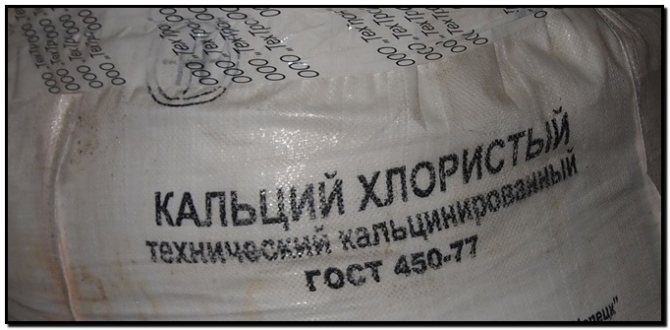
Accordingly, there are many recipes for the preparation of monolithic wood concrete. In some recipes, wood is prepared and processed, in others, a chemical component is added directly to the mixture.
According to one of the recipes, chips are soaked in lime (80 kg of lime per cube of wood), squeezed out. Then sprinkle with quicklime powder (80 kg) on top, mix, level, dry and add to the mixture. Thus, they get rid of wood sugars that affect the strength of monolithic wood concrete.
Fumbling with wood chips, and even more so with such volumes for construction, is a rather time-consuming business, requiring space for this process. Therefore, a quick option for the preparation of monolithic wood concrete would be the use of calcium chloride or aluminum sulfate (aluminum sulfate). In this case, the chips can not be processed, but it will be better if they lie in the open air, under the sun and rain, for a couple of months (not in a heap!). Also, if possible, it can be soaked in water and dried before mixing. Soaking and curing is a kind of elementary preparation of the wood, allowing some of the sugar to be eliminated.
At the stage of preparing the composition of monolithic wood concrete, calcium chloride or aluminum sulfate 2-5% of the mass of cement is added. So what is the proportion of the chemical additive for wood concrete, 2% or 5%? It depends on the brand and on the quality of the cement. The composition of the same brand (for example, M500) but different manufacturers may actually differ in quality. Therefore, it is recommended to make a test batch. If, when adding calcium chloride 5% by weight of the binder, "efflorescence" (white salt efflorescence) appears on the hardened material, then the percentage of the chemical component must be reduced. Efflorescences indicate that the cement is good and 5% is too much for the composition. At the same time, 2% may not be enough. A couple of test mixes are worth doing.
It's important to know! There is no specific proportion of the chemical component for monolithic wood concrete! It should always be determined depending on the quality of the cement and chips used (quality, wood species, dimensions).
Some people do not want to deal with the selection of the proportion of calcium chloride. And, so that salt efflorescence does not form, water glass is added to the composition. For example, 2% calcium chloride and 3% water glass by weight of cement. But liquid glass is quite expensive, so for many it is more economical to make a couple of test batches and determine the proportion of calcium chloride.
The proportions of wood chips, cement and water per 1m3 of jellied wood concrete
The proportion depends on what type of monolithic wood concrete you are preparing: structural or heat-insulating.
Consider the proportions of the composition per 1m3 of cast-in-place monolithic wood concrete when using a binder grade M400 and absolutely dry chips of coniferous wood:
Structural monolithic wood concrete
В2.5 (М25) - 380 kg of cement, 250 kg of wood filler, 440 liters of water;
В2,0 (М20) - 350 kg, 230 kg, 400 liters;
B1.0 (M15) - 320 kg, 210kg, 360 liters;
Heat-insulating monolithic wood concrete
B0.75 (M10) - 300 kg of cement, 190 kg of wood filler, 430 liters of water;
B0.35 (M5) - 280 kg, 170 kg, 300 liters;
Correction of the composition
If you use a different brand of cement, then the proportion is calculated using the coefficient: for M300 the coefficient is 1.05, for M500 - 0.96, for M600 - 0.93.
The chipping ratio is given for absolutely dry material. This is usually rare. Therefore, its amount needs to be adjusted depending on its moisture content - add a certain amount. To calculate the additional amount, we multiply the above mass by a coefficient, which is calculated as the% moisture content of the chips divided by 100%.
For example, wood core has a moisture content of 20%. You need to get a monolithic wood concrete of strength class B2.0. Therefore: 20% / 100% = 0.2. We multiply the coefficient 0.2 by the amount of dry chips 230 kg for B2.0 - 0.2 * 230 = 46 kg. In addition, you need to add 46 kg of wood filler to the composition.
Kneading process
Chips and calcium chloride (or other chemical additive) are dry mixed, then cement is added. Achieve uniformity of the composition. Then water is added from a watering can with constant stirring, until all the wood aggregate is covered on all sides with the mixture.
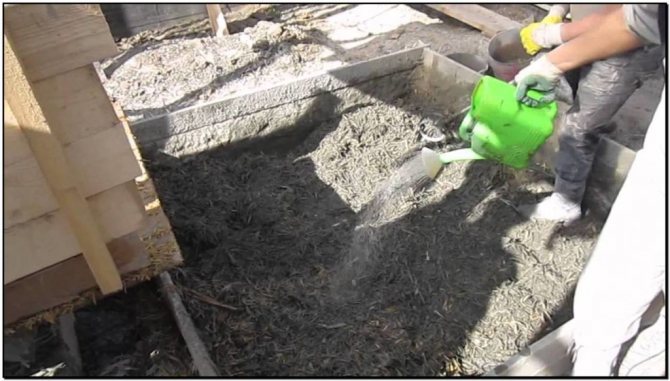

It is convenient to mix using a construction mixer or mixer. This usually takes 5-7 minutes.
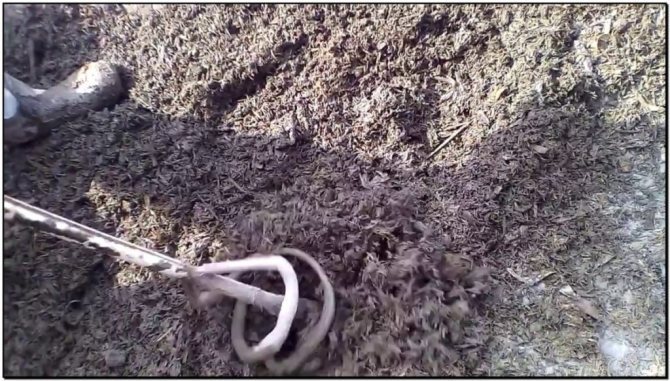

The finished mixture of monolithic wood concrete is a moderately wet mass. If you take chips in your hand, then water should not flow out of it!
If a chemical additive was not introduced into the composition, but preliminary processing of the aggregate in lime was carried out, then the mixing process lasts 25 minutes so that the lime has time to be extinguished.
So you can prepare a monolithic arbolite with your own hands for subsequent pouring into the erected formwork or permanent formwork of walls and partitions, as well as pouring floors and ceilings.
Benefits
Arbolit with your own hands is easy to make at home, just fill the mold with a pre-produced mixture. The technology is simple, it is enough to know the proportions of the components. This procedure can be performed independently at the site, saving money on the transportation of building materials. Of the disadvantages that arbolite is characterized by, only high moisture absorption in the range of 50-80% is called. Due to the low moisture resistance in areas with high humidity, waterproofing and a high concrete foundation will be required. But the arbolite block has a lot of advantages:
1. multifunctionality - suitable for various construction work, you can give the desired shape yourself by sawing.
2. economy - this building material is made from waste, and high thermal insulation allows you to spend less on heating;
3. heat resistance, despite the content of wood waste;
4. with proper processing, it is not susceptible to the influence of microorganisms;
5. Provides sound insulation;
6. homogeneous lightweight material, irreplaceable on problem soils and in seismically active zones;
7. Perfectly holds fasteners and light fittings for finishing.
It should be noted that not all types of wood are suitable for adding to arbolite: waste of coniferous and deciduous species, except for beech, is suitable for these purposes. The use of the latter is not allowed.
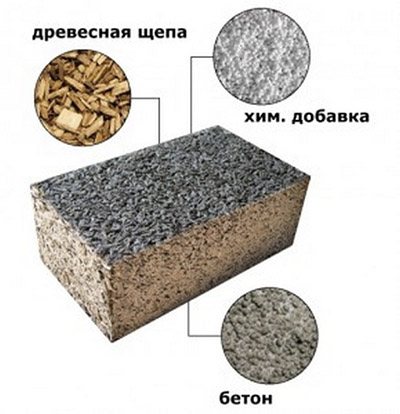

- Hozblok from arbolite Do it yourself part 2. Hozblok from arbolite Do it yourself part 2 351 views ⌚1 year ago
- in this videos you will see how to make a fence from monolithic wood concrete with your own hands. Have a nice view ... a fence made of solid wood concrete with your own hands 12 ⌚1 year ago
- Wooden concrete house. DIY wood concrete house 6 ⌚1 year ago
- The beginning of the household. block of wood concrete. The beginning of the household. block from wood concrete with your own hands ⌚1 year ago
- This video shows how to make a monolithic wood concrete yourself. Music by Jimmy Fontanez / Doug Maxwell Urban Lullaby. Arbolit with your own hands. Bath with your own hands. ⌚1 year ago
- Hello everyone!! Look and see everything! house made of monolithic wood concrete with your own hands 4 ⌚1 year ago
- He installed beacons for plastering, made an overview of the house ... Rostov-on-Don. Contact: 8-908-513-54-59 My sites: ... Arbolit. Blocks turned out. Bath with your own hands. Things went uphill))) 175 views ⌚1 year ago
- In this video, the continuation of the construction of a monolithic house made of wood concrete. We opened the construction season with a stop ... Do-it-yourself house construction using TISE + ARBOLIT technology. 2 ⌚1 year ago
- Arbolit is a lightweight wall block made from a mixture of wood chips, cement and chemical mixtures-up ... A house made of wood concrete in 4 years How it looks and what has been done. 114,223 views ⌚1 year ago
- As it was, the chronicle of the construction site. heating for a penny of this house can be found here ... Monolithic arbolite. Second floor. Review of the wood concrete lift 25 ⌚2 years ago
- equipment for the production of wood concrete blocks with your own hands. DIY wood concrete blocks at home 229 views ⌚2 years ago
- Making wood concrete blocks for your home. DIY wood concrete house and heating for a penny 7 206 views ⌚2 years ago
- # CHIP CUTTERS, #chips, for the stove and # arbolite, # with their own hands. Video homemade + factory, review, work. Processing ... equipment for the production of wood concrete blocks with their own hands 325 views ⌚2 years ago
- We managed to pour this chip concrete over the summer, working together, sometimes I poured one, only one turned out ... Arbolit on our own 2 776 views ⌚2 years ago
- Concrete mixer from a barrel of 200 liters of forced action + an overview of the concrete mixer for wood concrete.
